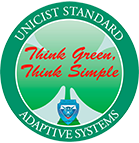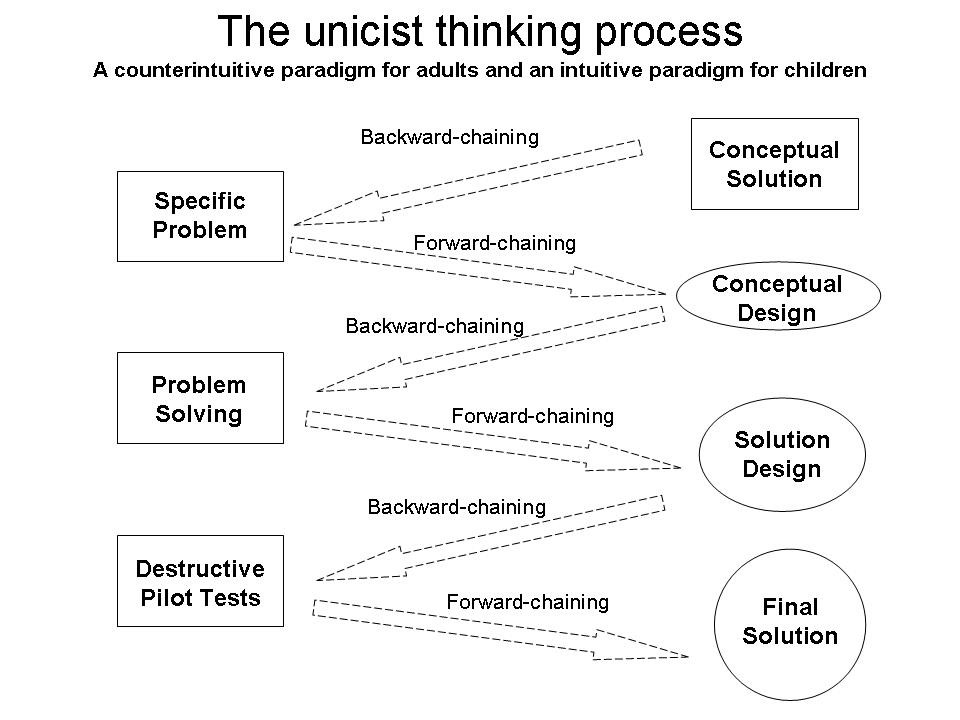
The unicist ontological reverse engineering approach was developed to discover the concepts and fundamentals that underlie “things”. It is used to build the conceptual structures that define the fundamentals of the functions and processes involved. It requires using backward-chaining thinking to transform operational knowledge into functional and conceptual knowledge.
This method is necessary to discover the underlying concepts of new fields of action and to understand the feedback of destructive pilot tests.
The Functionality of the Method
Ontological reverse engineering is the process of discovering the ontological principles of an object, system or reality through the analysis of its ontological structure, function and operation.
Ontological reverse engineering is the unicist mechanical process to discover or rediscover the nature of an object of reality that is being researched. It is a technological approach that becomes necessary when dealing with the nature of problems.
It is the basic tool for complex problem solving. Without being able to deal with the reverse engineering process the nature of problems cannot be approached. This is the real limit of the problems an individual can solve.
Everyone can use this approach at some level. The question is to accept it and to learn it to expand the boundaries of its application.
The Ontological Reverse Engineering Process
Backward thinking implies being able to think from the end to the beginning. Consider a mounting line. It is the capacity of an individual to decompose the final “product” into its components.
When we are talking about ontological reverse engineering it means that in this process the individual is able to find the nature of a specific reality. To do so, an individual has to be able to discover the structure of the nature of that reality.
The ontological reverse engineering process is the basic approach to rediscover the concepts of a reality. And to do this, individuals need to discover the components of the “mounting line” that define the final reality until they had found the objects that integrate that reality.
The Structure of Ontological Reverse Engineering
The four segments that define the structure are:
- Backward Creative
- Backward Constructive
- Forward Analytical
- Forward Operational
Backward Creative
It is the segment that has the necessary creativity to think with a backward chaining thinking approach, but opening the boundaries of the object that is being researched to find a functional analogy that obtains the same result in a wider field. An example of this is the metaphor that is used in Extreme Programming methodologies. This segment is put into action by the capacity of developing operational solutions and is sustained by the analytical capacity.
Backward Constructive
It is the segment that deals naturally with the finding of the idea of the concept of the reality under research. Although those in this segment of reverse engineering consider the functional analogy, they need to clarify the idea of the concept that explains what a particular reality is for, how it works and what it is intrinsically. This segment is put into action by analytical process thinking and is sustained by operational thinking.
Forward Analytical
This is the segment that deals with the building of processes for the existing objects. It uses cause-effect thinking to build functional efficient processes. It is a segment that considers the needs of quality assurance in order to sustain the added value defined by the objects that have been built. This segment is put into action by the backward constructive thinking and sustained by the backward creative thinking.
Forward Operational
This segment deals with the building of objects to generate added value. It is the basic segment that develops the necessary solutions to ensure that objects work. It is based on cause-effect thinking to build the objects that are necessary to add value. The main goal of this segment is to ensure results in every object that has to be built. This segment is put into action by backward creative thinking and sustained by backward constructive thinking.
Steps of the Ontological Reverse Engineering Process
Step 1 – Definition of the value to be added
Step 2 – Approach the nature of the problem in its oneness
Step 3 – Find a functional analogy that is managed by the researcher/s
Step 4 – Develop the idea of the concept integrating: what for, how and what it is
Step 5 – Describe the nature of the problem to develop the necessary objects
Step 6 – Define the idea of a process to put the objects into action
Step 7 – Build of the necessary objects to produce the required results
Step 8 – Build the process with the necessary quality assurance
Step 9 – Define the process to be used to develop the added value
Step 10- Develop the pilot tests and recycle
Annex
Expert Systems to Sustain Methods
The unicist expert systems are alternative tools for any method that deals with business problem solving or solution building.
They were developed to manage the fundamentals of business processes by managing the root causes of processes to develop solutions in adaptive environments.
With multiple specialized modules to solve specific problems, these systems manage the unified field of the business processes to manage their functionality, dynamics and adaptability.
Note: The R&D work of this technology/methodology was led by Peter Belohlavek at The Unicist Research Institute.
The Unicist Research Institute





